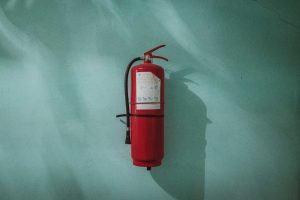 Bar and restaurant kitchens have many places where fires can occur. Following a few simple safety tips can prevent fires and keep employees and patrons safe in your establishment.
Bar and restaurant kitchens have many places where fires can occur. Following a few simple safety tips can prevent fires and keep employees and patrons safe in your establishment.
Regular inspections are the first step in fire safety. Inspections of fire safety equipment must be done annually by a professional for approval by the fire marshal. Employees and managers cannot legally conduct the inspections themselves. The sprinkler system, fire extinguishers, alarms, and exit lights must all be inspected and repaired, if needed, during this time.
During the inspection, certain items need to be changed out at certain ages per National Fire Protection Association codes. A few examples are links for the hood need to be changed out annually, fire sprinkler gauges need to be changed out every five years, and fire extinguishers need to be recharged every six years.
Most of the time repairs are fairly simple and don’t cost a lot of money if maintained regularly. The repairs can get expensive if they aren’t addressed for many years.
The biggest fire safety hazard in any bar/restaurant is the ventilation hood. Most fires occurring in bars/restaurants are due to improper cleaning of the ventilation hood. The hood allows an escape for smoke and steam up and out of the building. Grease and grime, built up over time, can become a tinder box when a flame is sucked up into the ventilation system.
When the hood is dirty, the hood system attached to it will not actuate so the chemicals won’t come out of the lines. If the lines don’t actuate, then you have nothing to fight the fire, and it can spread very quickly due to the grease build up.
Professional cleaning of the hood, on a regular basis, can help prevent fires from happening. The ventilation hood needs to be inspected by a professional semi-annually or every six months.
Keeping your hood clear of debris, such as boxes and shelving, is also necessary. In addition to the automatic suppression system, the hood has a manual pull station operating the lines if it fails to actuate on it’s own. Making sure the area is free of debris allows the employees to use the pull station—putting out the fire quickly.
Having proper fire extinguishers in your establishment is necessary to battle any fires. Class K fire extinguishers are required for all restaurant kitchens. These extinguishers spray out a chemical effectively smothering grease fires. The front of the house is required to have a class ABC fire extinguisher. These extinguishers are your basic use extinguisher used in putting out small fires.
Extinguishers also need to be free of debris for easy access. Do not allow employees to hang aprons on them or block them with boxes or carts. Timing is everything when a fire starts. Fast access to the extinguishers and pull stations helps put out the fire before it spreads.
Lastly, fire exit signs need to be posted in the proper areas and the lights inside must be functioning. Exit signs light up allowing patrons and employees to quickly find escape routes when a fire starts. Improper lighting can lead to tragedy in a smoke-filled situation if people are not able to find the exits quickly.
Fire safety is important for all kitchens. Following these few simple steps can help keep your bar/restaurant, employees, and patrons safe. Professional inspections and regular cleaning will go a long way in the protection of your establishment.
By Chad Connor, the President of Affordable Fire and Safety located in Gilbert, Arizona. Affordable Fire and Safety conducts thousands of inspections each year.
Photo by Piotr Chrobot on Unsplash








